
Hemiphora uncinata is a flowering plant in the mint family Lamiaceae and is endemic to the south-west of Western Australia. It is an erect, spreading shrub with its branches densely covered with white, woolly hairs. Its leaves are rough and wrinkled and the flowers are tube-shaped with deep pink petals with wavy edges.
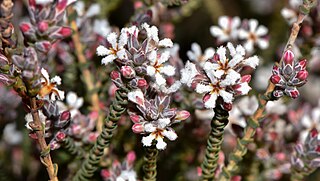
Leucopogon sprengelioides is a species of flowering plant in the family Ericaceae, and is endemic to the south-west of Western Australia. It is an erect shrub with stem-clasping, egg-shaped or lance-shaped leaves and short, dense spikes of white, tube-shaped flowers.

Leucopogon plumuliflorus is a species of flowering plant in the heath family Ericaceae and is endemic to the south-west of Western Australia. It is a weakly erect shrub with egg-shaped leaves and spikes of white or pinkish-white, tube-shaped flowers.

Leucopogon gibbosus is a species of flowering plant in the heath family Ericaceae and is endemic to the south-west of Western Australia. It is a shrub with more or less round leaves and spikes of tube-shaped white flowers on the ends of branches and in leaf axils.
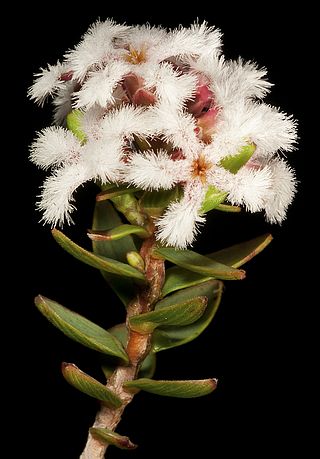
Leucopogon polymorphus is a species of flowering plant in the heath family Ericaceae and is endemic to near-coastal areas of south-western Western Australia. It is a shrub with egg-shaped to lance-shaped or almost linear leaves and short, dense spines of white, tube-shaped flowers.
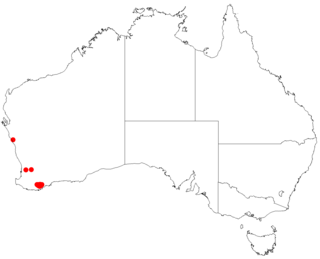
Leucopogon atherolepis is a species of flowering plant in the family Ericaceae and is endemic to the south-west of Western Australia. It is an erect shrub with linear leaves and white, tube-shaped flowers.

Leucopogon compactus is a species of flowering plant in the heath family Ericaceae and is endemic to the south of Western Australia. It is an erect shrub with oblong leaves and dense clusters of white, tube-shaped flowers.

Leucopogon cuneifolius is a species of flowering plant in the heath family Ericaceae and is endemic to Western Australia. It is an erect, bushy shrub that typically grows to a height of 0.2–1.5 m. Its leaves are egg-shaped to lance-shaped with the narrower end towards the base, about 6 mm (0.24 in) long with a distinct petiole. Up to 3 flowers are borne in upper leaf axils on a short peduncle, with small bracts and bracteoles at the base. The sepals are about 3 mm (0.12 in) long and the petals about 5 mm (0.20 in) long, the petal lobes much shorter than the petal tube.
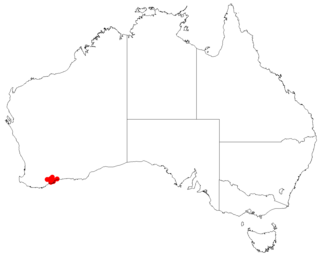
Leucopogon decussatus is a species of flowering plant in the heath family Ericaceae and is endemic to the south-west of Western Australia. It is an erect shrub that typically grows to a height of about 40 cm (16 in). It was first formally described in 1859 by Sergei Sergeyevich Sheglejev in the Bulletin de la Société impériale des naturalistes de Moscou. The specific epithet (decussatus) means "decussate".

Mirbelia subcordata is a species of flowering plant in the family Fabaceae and is endemic to the south-west of Western Australia. It is an erect, spreading shrub with egg-shaped to lance-shaped leaves and yellow or orange and red flowers.

Leucopogon fimbriatus is a species of flowering plant in the heath family Ericaceae and is endemic to the south-west of Western Australia. It is a bushy, erect or sprawling shrub with overlapping egg-shaped or oblong leaves and spikes of tube-shaped white flowers on the ends of branches.

Leucopogon gilbertii is a species of flowering plant in the heath family Ericaceae and is endemic to the south-west of Western Australia. It is a slender shrub with linear to lance-shaped leaves and spikes of tube-shaped white flowers on the ends of branches and in leaf axils.

Leucopogon gnaphalioides is a species of flowering plant in the heath family Ericaceae and is endemic to the south-west of Western Australia. It is a slender or sprawling shrub with crowded egg-shaped to lance-shaped leaves and spikes of tube-shaped white flowers on the ends of branches and in upper leaf axils.

Leucopogon lasiophyllus is a species of flowering plant in the heath family Ericaceae and is endemic to the south-west of Western Australia. It is an erect shrub with linear to lance-shaped leaves and small, dense spikes of tube-shaped white flowers on the ends of branches and in leaf axils.
Androcalva cuneata is a species of flowering plant in the family Malvaceae and is endemic to the south-west of Western Australia. It is a low, spreading, densely hairy shrub that sometimes forms suckers and has wedge-shaped leaves and clusters of 5 to 15 pink flowers.
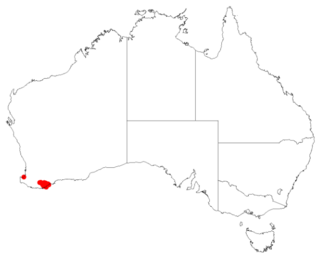
Leucopogon penicillatus is a species of flowering plant in the heath family Ericaceae and is endemic to the south-west of Western Australia. It is an slender, erect, spreading shrub with egg-shaped to narrowly triangular leaves and white, bell-shaped, bearded flowers arranged in groups of between 3 and 13.

Leucopogon reflexus, commonly known as heart-leaf beard-heath, is a species of flowering plant in the heath family Ericaceae and is endemic to the south-west of Western Australia. It is an erect shrub with small, usually downturned leaves and short, dense spikes of tube-shaped, white flowers.

Guichenotia angustifolia is a species of flowering plant in the family Malvaceae and is endemic to the south-west of Western Australia. It is an erect, prostrate or climbing shrub with hairy young growth, hairy, oblong to linear leaves and pink to mauve flowers.

Leucopogon thymifolius, commonly known as thyme beard-heath, is a species of flowering plant in the heath family Ericaceae and is endemic to Victoria. It is a slender shrub with spreading, egg-shaped to oblong leaves and white to pale pink, tube-shaped flowers arranged in spikes of seven to thirteen in leaf axils, or on the ends of leafless branches.
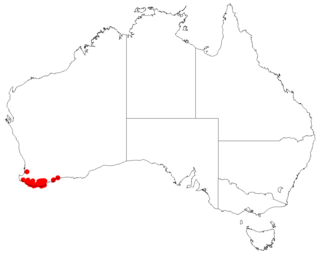
Leucopogon unilateralis is a species of flowering plant in the heath family Ericaceae and is endemic to the south-west of Western Australia. It is a shrub with oblong leaves and spikes of white, tube-shaped flowers arranged in small groups on the ends of branches and in upper leaf axils.



















